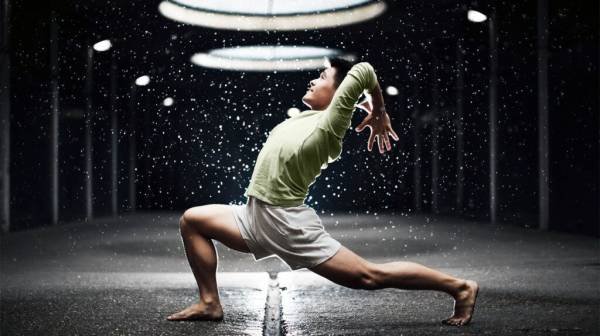
Share on PinterestScientists investigated the effects of exercise, such as yoga and tai chi, on insomnia. Maresa Esmee/Stocksy
- Practicing yoga, Tai Chi, walking, and jogging are effective therapies for treating poor sleep and insomnia, according to a new meta-study.
- The meta-study looked at the outcomes of 22 randomized controlled trials investigating the effects of exercise and other therapies for insomnia.
- The positive effects of yoga were the strongest of the exercises studied, and the beneficial effects of Tai Chi were the longest-lasting.
Four types of exercise may be the best ways to improve sleep quality and avoid insomnia: yoga, Tai Chi, walking, and jogging.
A new meta-study — a study of other studies — found that for people seeking better sleep, yoga, tai chi, walking, and jogging rivaled cognitive behavioral therapy for insomnia (CBT-i) in effectiveness.
While authoritative statistics on insomnia worldwide are elusive, the latest research suggests that 16.2% of the global population suffers from the condition, and 7.9% have severe insomnia. In the U.S., according to a survey study by the Centers for Disease Control and Prevention, 14.5% of adults had trouble falling or staying asleep within a 30-day period.
Getting sufficient sleep is important for good health. Seven to nine hours is the recommended amount of sleep each night for adults.
While CBT-i is the current “gold standard” for treating sleeplessness. It typically involves a series of one-on-one sessions with a sleep therapist.
However, exercise may be more readily accessible to some, can be easily integrated into one’s life on a long-term basis, and can serve as a complement to CBT-i.
As such, the meta-study’s findings will be of interest to many:
- Practicing yoga may increase sleep time by just under two hours a night and boost sleep efficiency by 15%. It may also shorten the amount of time it takes to fall asleep and wake up after having been asleep.
- Tai Chi may improve sleep quality scores by over four points, increase total sleep time by nearly an hour, reduce wake after sleep onset, and shorten sleep onset latency. The analysis also found the beneficial effects of Tai Chi were especially long-lasting: as long as two years.
- Walking or jogging may result in an almost 10-point reduction in insomnia severity scores.
The study is published in the journal BMJ Evidence-Based Medicine.
Analyzing 7 forms of physical activity
The 22 trials encompassed in the meta-study involved 1,348 participants and explored 13 different therapies intended to relieve insomnia. The studies ran from 6 to 26 weeks in length.
Seven of the studies investigated exercise-based activities. These were yoga, Tai Chi, walking or jogging, aerobic plus strength exercise, strength training alone, aerobic exercise combined with therapy, and mixed aerobic exercises.
An issue with any meta-study is that the quality of the trials it includes varies. Conclusions that can be drawn are often tempered with questions regarding certainty. Among those concerns is an inevitable lack of detail that can cloud conclusions somewhat.
“For example, what is the age group, gender, ethnicity, and overall clinical profile of the participants from the 22 studies included in this meta-analysis? What type of co-morbidities do they have, if any?” asked Carleara Weiss, MD, Ph.D., MSH, RN, of Aeroflow Sleep, who was not involved in the study.
Jonathan Cedernaes, PhD, a sleep researcher at Uppsala University in Sweden, who was also not involved in the study, acknowledged that the study was “quite a comprehensive analysis which seems to be robustly done.” However, he cautioned:
“While the authors’ findings suggest that different exercise modalities may benefit different aspects of sleep, I think we need more evidence to draw those types of conclusions.”
Why is it so hard for so many to sleep?
Leah Kaylor, PhD, clinical psychologist specializing in trauma and sleep, who was not involved in the study, told Medical News Today:
“Insomnia is one of the most common sleep disturbances. It’s rarely caused by a single factor. Instead, insomnia typically arises from an interplay of biological, psychological, and environmental contributors.”
Cedernaes cites “the high demands of our 24/7 society, with high stress from trying to manage both a successful career and family life.”
“We saw that rates [of insomnia] increased during the COVID-19 pandemic,” recalled Cedernaes, “which may have to do with further increases in stress. Periods of uncertainty, which can include financial ones, have been tied to increased risk of insomnia.”
“There is also evidence that the increased use of artificial light can contribute, as well as increased (especially evening or nighttime) use of social media,” he said.
An increasing awareness of sleep issues may also be aggravating the problem, pointed out Kaylor.
“People with insomnia often develop dysfunctional beliefs about sleep, such as catastrophizing the effects of poor sleep or believing they must ‘force’ sleep. These thoughts can lead to pre-sleep rumination, sleep performance anxiety, and paradoxical wakefulness — making it even harder to fall asleep.”
— Leah Kaylor, PhD
In addition, Kaylor said, “Mental health conditions like anxiety and depression further intensify these cognitive loops. Chronic pain, gastrointestinal disorders, PTSD, depression, anxiety, and neurodegenerative diseases (e.g., Alzheimer’s) are all strongly associated with insomnia.”
Why these exercises may help sleep quality
Kaylor proposed a likely mechanism at work:
“Chronic activation of the sympathetic nervous system — our fight-or-flight response — can lead to hyperarousal, a key feature of insomnia.”
“Practices like yoga and Tai Chi have been shown to decrease sympathetic tone and increase parasympathetic (rest-and-digest) activity, supporting the down-regulation of arousal prior to sleep onset.”
— Leah Kaylor, PhD
On a brain-chemistry level, Cedernaes said these activities may “activate the parasympathetic nervous system, and relatedly, may also reduce cortisol levels by lowering activity in the HPA axis that regulates cortisol.”
“Slow, rhythmic movements combined with breath control enhance vagal tone, which is associated with a calmer physiological state conducive to sleep,” added Kaylor.
Recent research, say the authors, supports the idea that exercise in general helps people fall asleep more easily. Laboratory studies suggest that it enhances neuroplasticity and strengthens connectivity in key brain regions involved in sleep.
“For walking,” noted Weiss, “scientific evidence suggests [as factors] reduced stress, improved circadian rhythms (when keeping consistent timing and exposure to light), and increased BDNF (brain-derived neurotrophic factor), which is critical for sleep regulation.”





